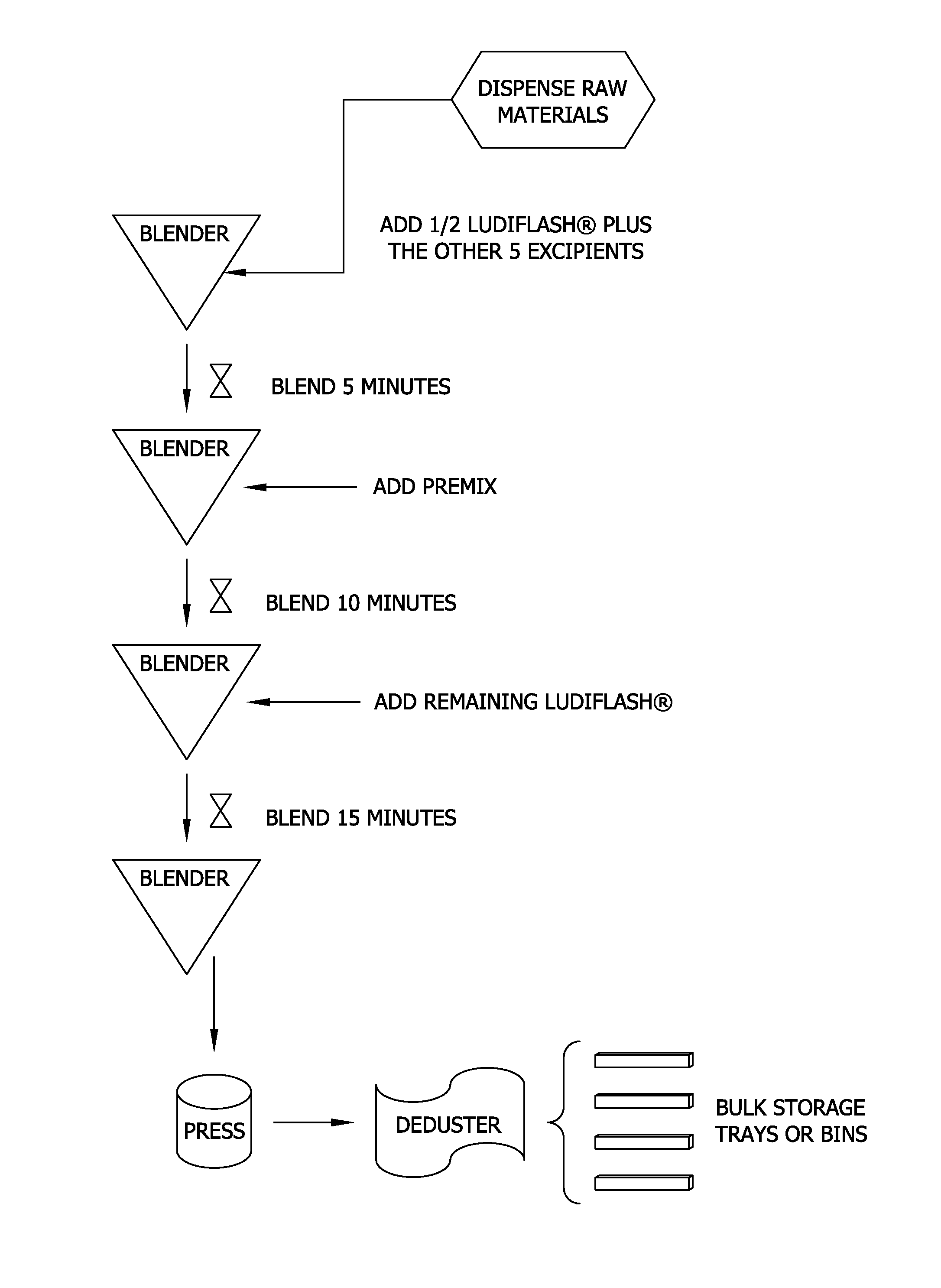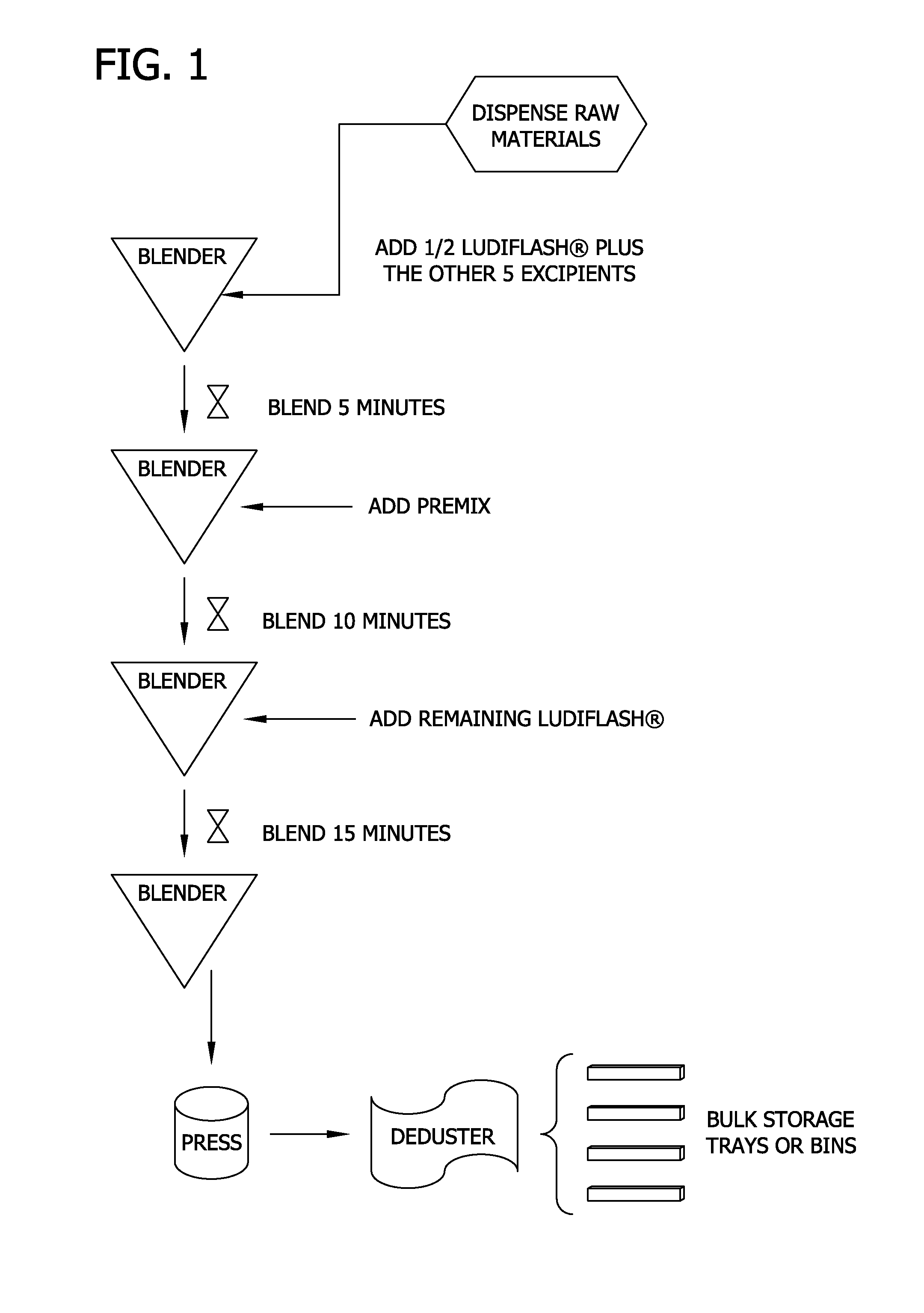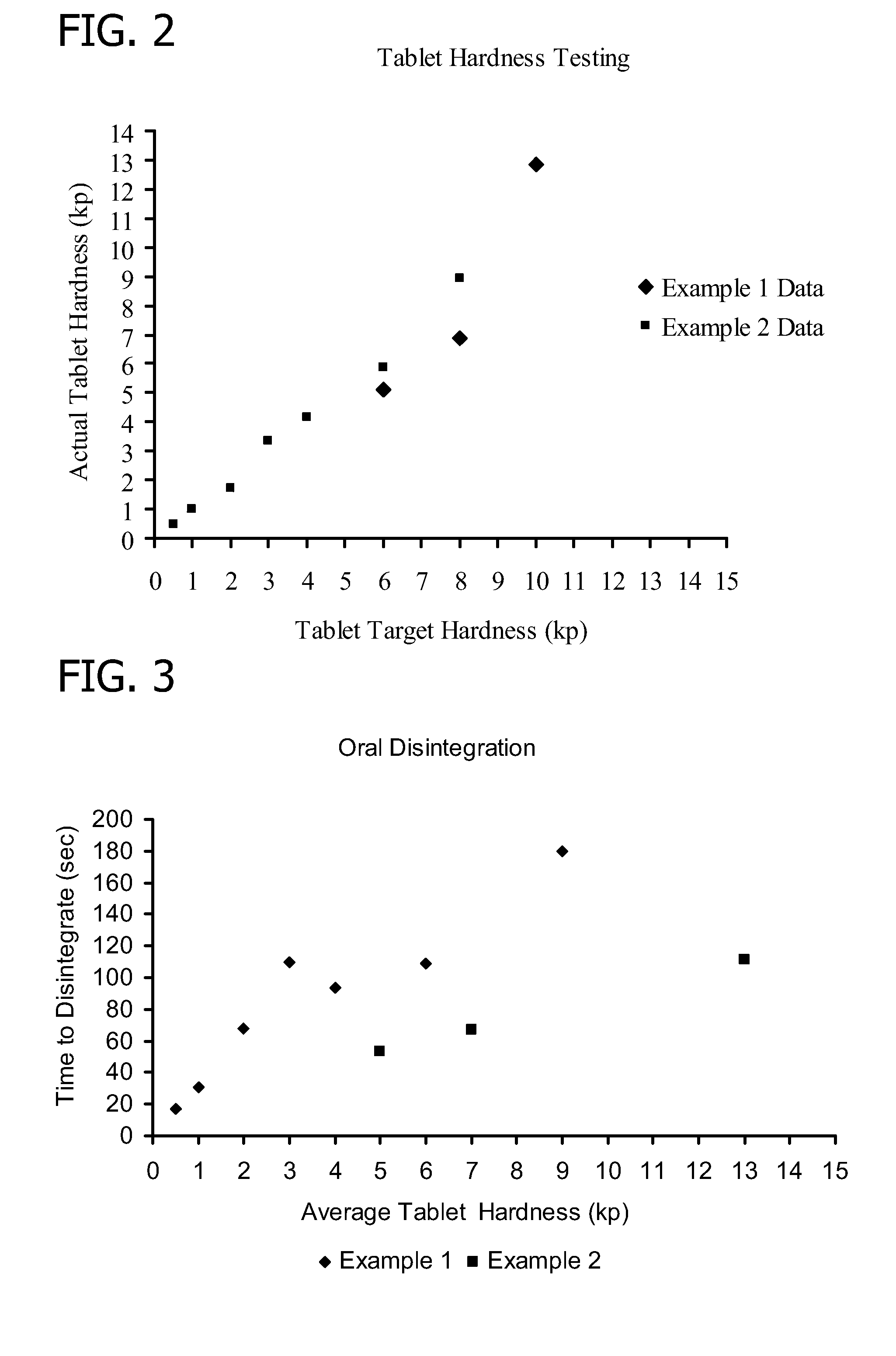Rapidly Dissolving Vitamin Formulation and Methods of Using the Same
a technology of nutritional composition and rapid dissolution, which is applied in the direction of drug composition, biocide, metabolic disorder, etc., can solve the problems of significant nutrient deficiency, increased risk of nutritional deficiencies in patients who have undergone bariatric surgery, and restricted dietary intake of patients, so as to improve patient compliance
- Summary
- Abstract
- Description
- Claims
- Application Information
AI Technical Summary
Benefits of technology
Problems solved by technology
Method used
Image
Examples
example 1
[0119]The purpose of this example is to characterize the durability of the nutritional supplement tablet over a range of hardness levels when the non-active ingredient component utilizes a binder / filler that is separate from the disintegrant.
[0120]Protocol
[0121]Tablets utilized for this example were manufactured according to the process described above and utilizing the formulation of Table 10. Specifically, the required non-active raw materials of Table 10 were dispensed into a 5 cubic ft. V blender. Only a portion of the binder / filler (i.e., the mannitol in the form of Roquette's PEARLITOL® 100 SD) was initially mixed with the other non-active raw materials. The non-active raw materials were blended until they appeared to be well mixed (i.e., for 5 minutes) in a V blender. The active ingredient components listed in Table 9 were then added to the non-active raw material mixture as a premix and further blended until it appeared to be well mixed (i.e., for 5 minutes). The remainder o...
example 2
[0143]The purpose of this example is to characterize the durability of the nutritional supplement tablet over a range of hardness levels when the non-active ingredient component utilizes a binder / filler and disintegrant that are a single component (such as, for example, LUDIFLASH® with KOLLIDON®).
[0144]Protocol
[0145]Tablets utilized for this example were manufactured according to the process described above and exemplified, for example, in FIG. 1 utilizing the formulation of Table 9. Specifically, the required non-active raw materials of Table 9 were dispensed into a 5 cubic ft. V blender. Only a portion of the binder / filler and disintegrant (i.e., the LUDIFLASH® with KOLLIDON®) was initially mixed with the other non-active raw materials. The non-active raw materials were blended until they appeared to be well mixed (i.e., for 5 minutes) in a V blender. The active ingredient components listed in Table 9 were then added to the non-active raw material mixture as a premix and further b...
example 3
[0160]The purpose of this example is to characterize process parameters and determine in-process tablet specification ranges for the nutritional supplement tablet.
[0161]Protocol
[0162]Tablets utilized for this example were manufactured according to the process described above and exemplified in FIG. 1 utilizing the raw materials listed in Table 23 to form the tablet detailed in Table 9. Specifically, the required non-active raw materials of Table 23 were dispensed into a 5 cubic ft. V blender. Only half of the LUDIFLASH® was initially mixed with the other five non-active raw materials (i.e., the KOLLIDON® CL-SF, stearic acid, fruit punch flavor, magnesium stearate, and sucralose). The non-active raw materials were blended for 5 minutes in a 5 ft3 V blender using the intensifier bar. The active ingredient components listed in Table 9 were then added to the non-active raw material mixture as a premix (Table 25) and further blended for 10 minutes utilizing the intensifier bar. The remai...
PUM
| Property | Measurement | Unit |
|---|---|---|
| time | aaaaa | aaaaa |
| time | aaaaa | aaaaa |
| time | aaaaa | aaaaa |
Abstract
Description
Claims
Application Information
 Login to View More
Login to View More - R&D
- Intellectual Property
- Life Sciences
- Materials
- Tech Scout
- Unparalleled Data Quality
- Higher Quality Content
- 60% Fewer Hallucinations
Browse by: Latest US Patents, China's latest patents, Technical Efficacy Thesaurus, Application Domain, Technology Topic, Popular Technical Reports.
© 2025 PatSnap. All rights reserved.Legal|Privacy policy|Modern Slavery Act Transparency Statement|Sitemap|About US| Contact US: help@patsnap.com



